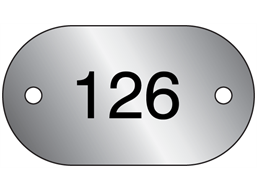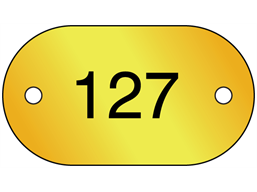
If you work in a retail environment, it is likely you have come across thermal transfer labels plenty of times already. These useful labels are mainly used for barcodes and to label things like products and food. Keep reading to find out more about thermal transfer labels.
What is a thermal transfer label?
Thermal transfer labels are created with an industrial thermal printer that uses a wax or wax/resin ribbon. They can be used in many different fields, including retail, catering, logistics and distribution, cosmetics and medical devices. They are able to withstand a temperature range of -15°C to +90°C and are ideal for barcode labelling because they produce high-quality images with perfect definition.
How are thermal transfer labels made?
Thermal transfer printing is a digital printing method which prints by melting a coating of ribbon onto the label. This is different to thermal printing, which does not use a ribbon.
Thermal Transfer printing produces long-lasting, durable images on a variety of different materials including Thermal Transfer Labels. Due to the method they are printed, Thermal Transfer Labels last much longer than just thermal printing labels as they are less light and heat sensitive. Thermal transfer labels retain colour and do not blacken in close proximity with heat.
Where can I buy thermal transfer labels?
Here at Label Source, we have plenty of thermal transfer labels in stock. Ranging from self-adhesive to tamper evident, there's something for everyone. Just click a type of thermal transfer label below to see the full range:
Browse all thermal transfer labels >

Serial numbers play a large part in tracking shipments, model numbers, batch dates and lot numbers. Though they may seem simple, serial number labels play a large part in ensuring that all of these operations run smoothly and that goods are not lost in the process. We have plenty of serial number labels in stock here at Label Source, and serial number labels with barcodes are a particularly popular option.
As these labels include both a serial number and a barcode, you will be able to store, transport and track your assets with supreme ease. Barcodes are ideal for product identification, stock control, tracking and warranty/guarantee requirements. This makes serial number labels with barcodes an essential item for a variety of different operations.
Here's a look at some of the serial number labels with barcodes we have on offer here at Label Source:
Our serial number labels with barcodes are supplied in rolls or sheets, allowing you to label multiple items in one sitting. They are also self-adhesive and can be attached to the product easily and securely. Browse all serial number labels with barcodes here >
If none of the above suit your requirements, we also have a custom asset tag builder tool that enbables you to create your own label design. It is simple and easy to use, and will allow you to choose the exact material and text you would like on your labels.

Click here to use our custom asset tag builder >
One of the most common problems with pressure sensitive adhesive labels is the selection of the correct adhesive to meet your requirements. If unsuitable adhesive products are used this can lead to poor bonding with your object surface, leading to easy peeling or, in the worst scenario, even falling off completely.
Many factors can impact on the selection of the correct adhesive type. These can include;
1. If your label is meant to be permanent or temporary, indoor or outdoor.
2. Differing surfaces on which the label is to be applied. Some materials such as low energy plastics, rubber, powder or paint coated finishes on metals or galvanised steel can prove to be more difficult and not suitable for lower specification adhesives.
3. Surface textures. Is your surface smooth and flat, curved, stippled or textured, or uneven?
4. Operating conditions. This can include low or high temperature use, high levels of humidity, presence of moisture, resistant to chemicals, excessive ultra-violet light or need to be flame retardant.
Bear in mind that most adhesives prefer to be applied at temperatures of 10° C, and need to be applied to clean, dry, dust free surfaces, with an absence of oil or silicone sprays. On treated surfaces, after initial application, the adhesive will continue to cure and fuse to the surface, to create a secure bond after 24-72 hours.
Label Source has a wealth of experience in handling a wide range of adhesive and material types. If you have experienced any problems, why not give us a call? Our technical advice department will be able to discuss your applications and come up with products to suit. For further information please contact Label Source by e-mail on sales@labelsource.co.uk or by telephone 0800 3761693 or 01443 842769.

When dealing with any hazardous material, it is always important that they are stored, handled and disposed of with great care. Neglecting to install the correct hazardous waste signs can be dangerous for people, animals, and the environment as someone may unknowingly allow the hazardous waste to be mishandled.
By using hazardous waste signs, you allow for the correct handling of the waste, ensuring everyone’s safety. Here at Label Source, we provide a range of signs for all your hazardous waste signs, here are some we have on offer:
Hazardous Waste Sign

A part of our environmental management sign range, this sign is a hazardous waste segregation sign. This gives an appropriate warning that people are in the presence of a substance that is hazardous.
Danger Hazardous Waste, Handle With Care Safety Sign

Part of our asbestos and chemical multi purpose safety sign range. This sign makes it clear that there is hazardous waste which creates occupational risks when handling, processing or storing the material.
COSHH Hazardous Waste Contents, Handle With Care Sign

Part of our Control of Substances Hazardous to Health range, this sign allows you to add the content details or the hazardous waste. This ensures that all handlers can take the right safety measures when handling.
If you need any advice on what sign best suits your requirements we are happy to advise. To talk to us about hazardous waste signs or any other query call us on, 0800 3761 693.
Are you looking for something to clearly mark inventory, assets, property or any other equipment? Luckily, Lable Source supplies top-quality numbered metal tags could be the perfect solution to your identification needs!
Browse our Metal serial number tags and see our 4 options available.


These metal serial number tags come in two different materials; aluminium or brass. Aluminium is ideal for cooler environments, whereas brass is perfect for anywhere hot as it doesn't produce sparks and is non-magnet. So whether you need to tag somewhere hot or cold, we have you covered. They sequentially numbered tags also come in two different sizes so you can pick from a 16mm x 47mm name plate or go for our bigger option at 25mm x 45 mm.
In order for the tags to be clear, the numerals are stamped onto the metal tag and this stamp is then colour filled. This allows the number to clearly stand out making it easy for you to identify. The holes on either side of the tag allow for them to be easily secured to a surface, far out of the way of the number so it can not be obstructed in any way
We offer these in aluminium and brass because they are both excellent materials to ensure your numbered metal tags last. Both brass and aluminium are lightweight, tough and resistant to most corrosive materials. This allows for them to be placed in most environments without worrying that the quality will worsen over time.
They are harder to chip or scratch and should be able to carry out your number identifications much more efficiently than any paper or plastic tags you may have considered.
We pride ourselves on having a label, sign or tag for any requirements here at Label Source. If you require any type of product we offer but would like some advice on what best suits your project then feel free to give us a call on, 0800 3761 693.